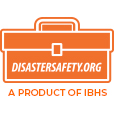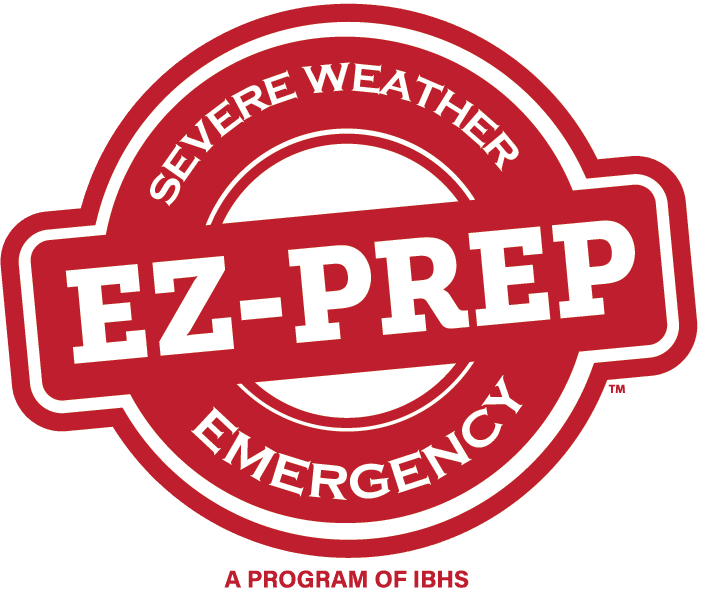Due to COVID-19, businesses may not be operating at a normal capacity. Some may still be vacant, while others are operating at a reduced capacity or with strict COVID protocols. Additionally, this winter is unlike any we have experienced before—there is now an increased risk of COVID transmission while a high percentage of the workforce is operating from remote locations. In all cases, your team needs to be prepared when a severe winter storm occurs.
UNDERSTAND YOUR EXPOSURE TO WINTER WEATHER.
Exposure to freezing temperatures can leave your commercial property at risk. The map shown below is based on the winter design temperature map in the 2018 International Building Code (IBC). The maintenance recommendations highlighted in this article apply to buildings located north of the 32°F line designated on the map.
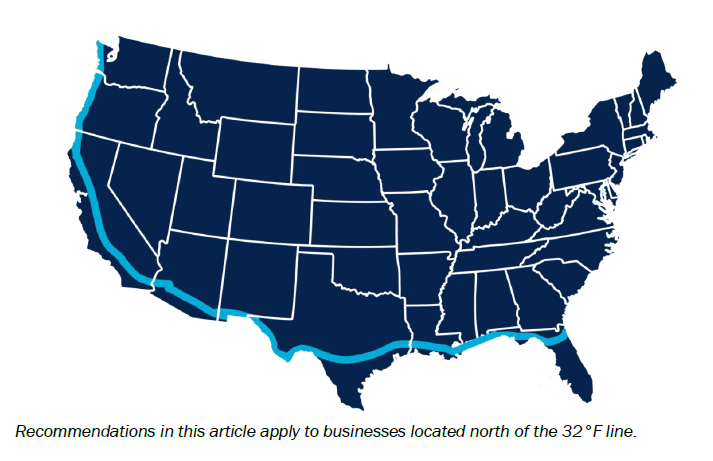
DEVELOP COVID-TAILORED BUSINESS CONTINUITY AND EMERGENCY PREPAREDNESS PLANS FOR WINTER WEATHER.
Before severe winter weather strikes, prepare by developing a COVID-tailored business continuity plan and an emergency preparedness plan that accounts for the variables of the pandemic. When reviewing/creating your plans, be sure to consider the following:
- There are new types of risks for employees who are working remotely.
- Facilities may be temporarily shut down; decide which tasks still need to be performed and how.
- Routine building maintenance may have been neglected or is being performed by a skeleton crew.
- CDC guidelines on personal protection and social distancing may affect normal protocols.
- Hiring contractors and scheduling repairs may be more difficult due to their staff size reduction (quarantine, lack of childcare, the necessity of reduced on-site staffing due to social distancing requirements, etc.) and/or material shortages.
- The aftermath of a winter storm may require cleanup; determine personnel and resource needs to protect the facility and handle this process.
- You’ll need to decide whether to re-open or remain closed after a winter storm.
- Emergency plans for loss of heat, electricity, fuel, and protection system impairments are necessary.
MAINTAIN AND PREPARE YOUR BUSINESS FOR WINTER WEATHER AMID COVID.
Maintenance of your facility, whether it is occupied or vacant, may look a bit different than before the pandemic began. Your building maintenance team may be operating at a reduced capacity or solely depending on a single person. Understanding your team’s capacity, maintenance skill level, and accessibility will help you properly prepare for an event. Additionally, it is important to follow all appropriate CDC COVID-19 safety guidelines.
1. PIPES
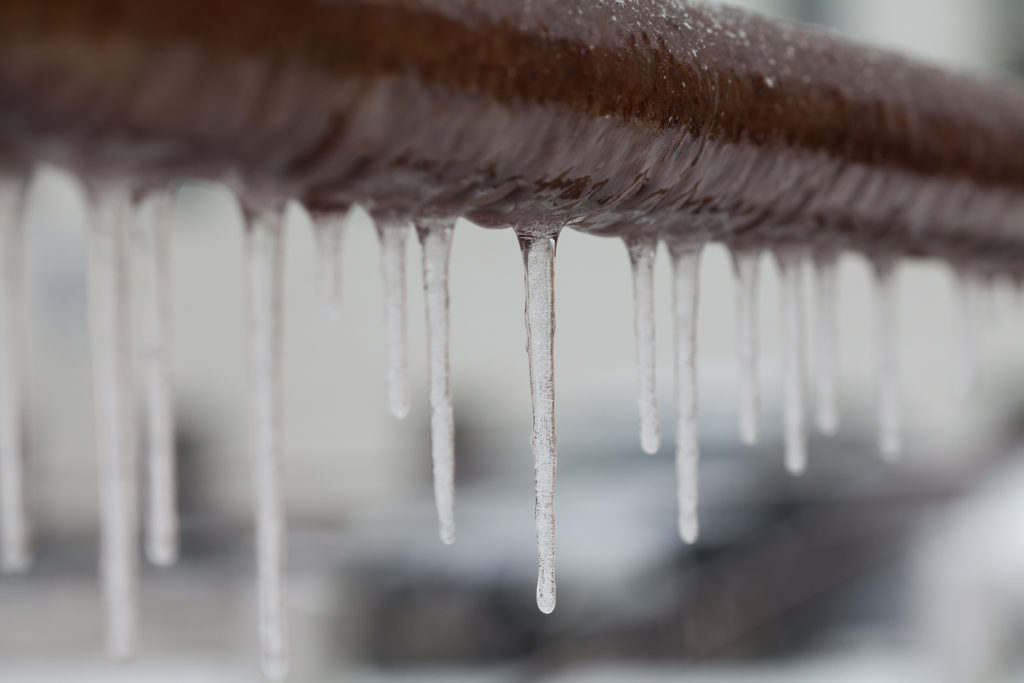
Burst pipes are the leading cause of property damage resulting from winter weather. Exposed to freezing temperatures, their contents may freeze, causing the pipes to rupture.
- Install a monitoring system that provides notifications if the temperature inside dips below the pre-determined level. Much like an alarm system, it is encouraged to have these notifications delivered to a cellular device that is monitored by a specially designated staff member.
- Seal all cracks, holes, windows, doors, and other openings on exterior walls with caulk or insulation to prevent cold air from penetrating wall cavity.
- Insulate pipes most vulnerable to freezing by using pipe insulation.
REDUCED CAPACITY:
- Some areas of your building may be unoccupied; frequently check those areas to make sure pipes are not exposed to large temperature swings.
- For small commercial properties, let faucets drip during extreme cold weather to prevent freezing of the water inside the pipes. If freezing still occurs, this will also relieve pressure buildup in the pipes between the ice blockage and the faucet.
VACANT BUILDINGS:
- Adjust the thermostat to 55°F and monitor the temperature to ensure it does not go below the minimum 40°F.
- If feasible, shut off the domestic water and drain the water lines. The domestic water lines are separate from the fire protection lines. This will prevent the pipes from freezing and possibly rupturing if building heat is lost.
2. SNOW AND ICE
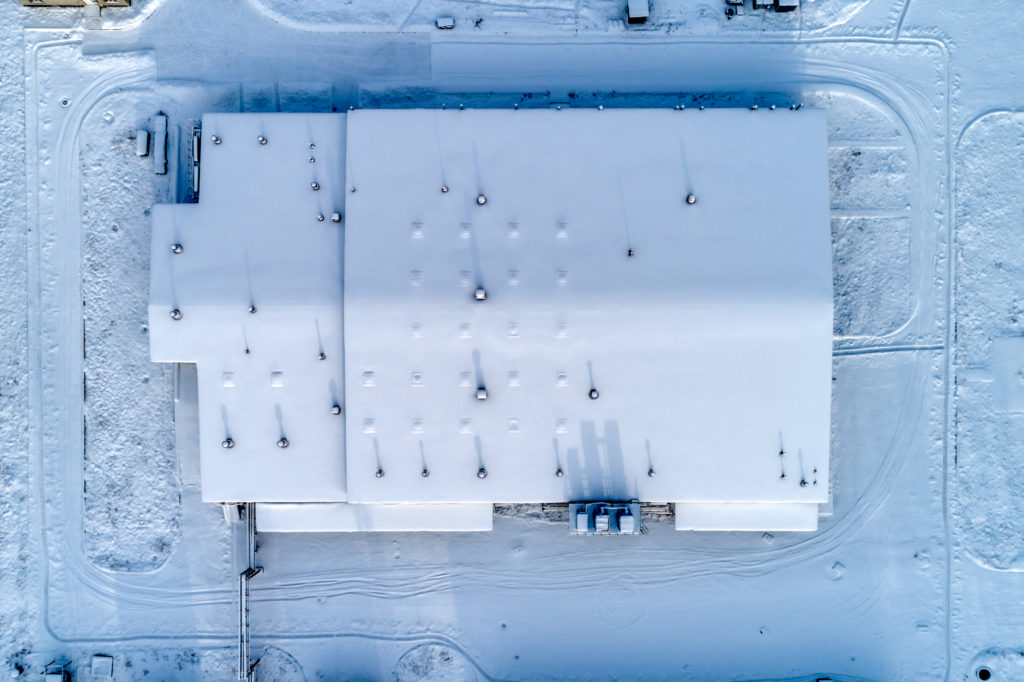
Excess snow and ice accumulation can put a building’s structure at risk of failure. After a snowstorm, whether your building is operating at a reduced capacity or is vacant, it is essential to have your maintenance or specifically designated staff return to your building to conduct a visual assessment to determine if there is excessive snow on the roof. A qualified professional may need to be hired if it is not safe to remove it yourself. To understand how much snow is too much, see IBHS recommendations to “Prevent Roof Damage from Heavy Snow and Ice.”
3. DRAINS AND GUTTERS
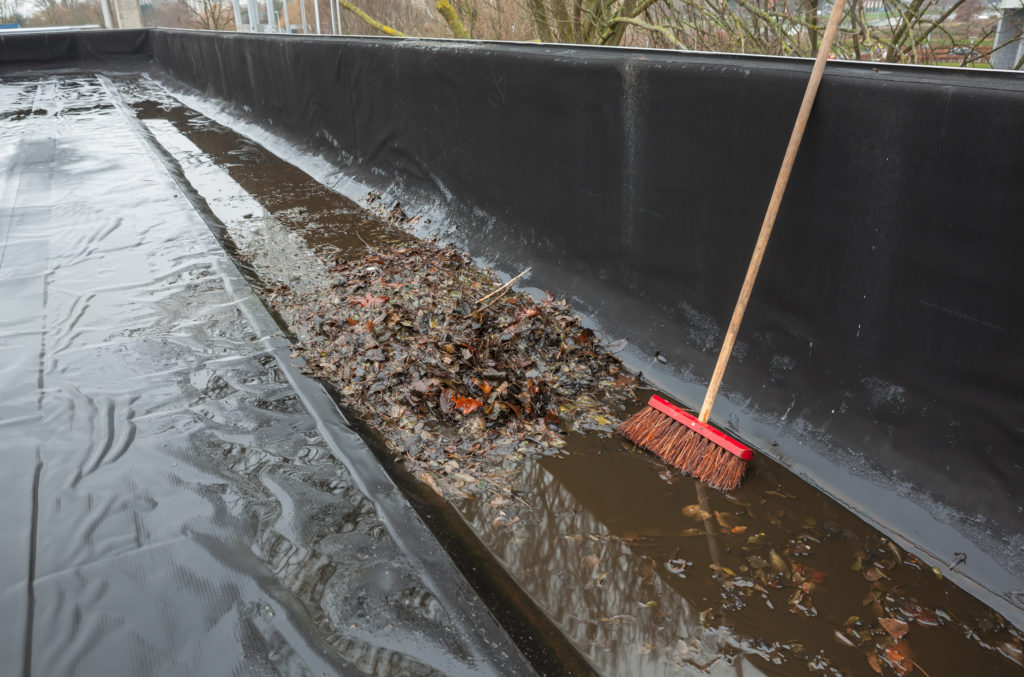
Water that does not properly drain off a roof has the potential to freeze and create ice dams. Ice dams can add significant additional loads to the roof and could cause interior water damage if left unattended. It is important for your team to maintain the roof drains and gutters if the building is operating at a reduced capacity or is vacant.
- Throughout the winter season, periodically remove all debris and other items that may prevent water from draining through roof drainage systems.
- Inspect gutters/downspouts for securement. Heavy snow/ice can cause gutters to weaken and sag, leading them to break away from the building and allow for water intrusion.
- During the off-season, hire a qualified licensed contractor to verify the drainage capacity is adequate.
4. BACKUP POWER
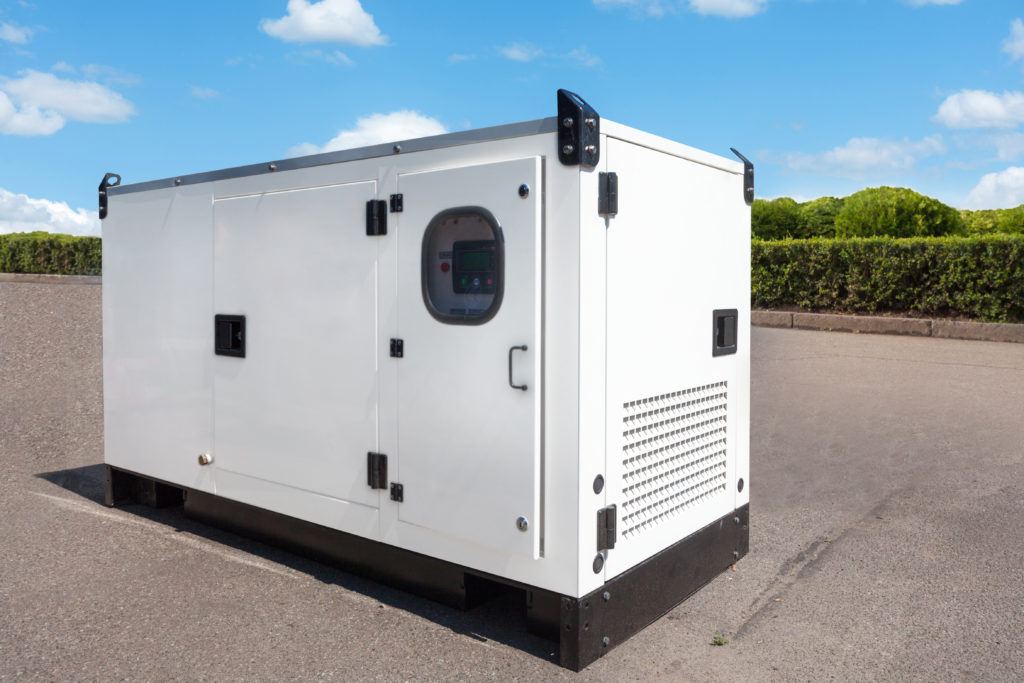
Generators are an integral part of the preparedness planning process for businesses of every size, and they can greatly reduce business disruption when normal power is interrupted. Backup power can help maintain a consistent building temperature and reduce the risk of freezing pipes.
- Select a generator that fits the needs of your business while understanding the parameters of COVID. See “Battle Business Disruption with a Generator.”
- Portable generators should be operated outside in a well-ventilated area. A garage or docking bay may not provide enough ventilation. Use extreme caution when determining where to operate a generator. Portable generators should never be left unattended.
- For permanent generators, a proper maintenance plan that includes weekly, monthly, and annual checks should be in place. See the manufacturer’s specifications for more information.
REDUCED CAPACITY:
- Portable power is the more affordable of the two options and requires maintenance staff to be on-site to deploy and manage. With the building operating at a reduced capacity, backup power can be deployed relatively quickly with your team on-site. If a portable generator fits your business’s needs, this could be a more economical option.
VACANT BUILDINGS:
- It is recommended to have a permanent generator that can automatically switch on if there is a power outage. This can be especially crucial when temperatures are below freezing and your building is vacant due to COVID, which can leave it vulnerable to internal temperature drops.
5. GROUND SNOW
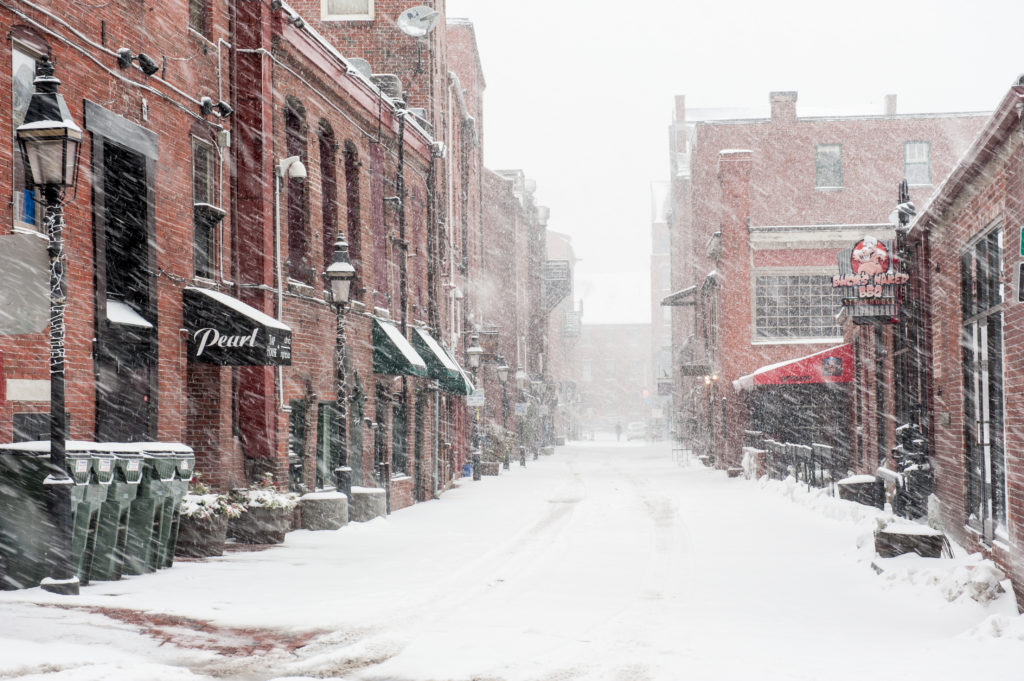
Severe winter storms can leave your building’s property—including sidewalks, parking lots, and loading bays—with excessive snow or ice.
- Following a winter weather event, have a member of the maintenance team assess the property for snow fall and ice accumulations.
REDUCED CAPACITY:
- Ground snow or ice removal may be required before employees can return to work. Have maintenance or a licensed professional remove the snow or ice from the grounds as soon as possible following a winter weather event.
VACANT BUILDINGS:
- While there are no workers on the property it is still important to remove all ground snow or ice following a storm. Snow and ice removal should be conducted as soon as possible because it allows for accessibility to the property in the event of an emergency and it also makes your building look occupied to keep away burglars and squatters.
